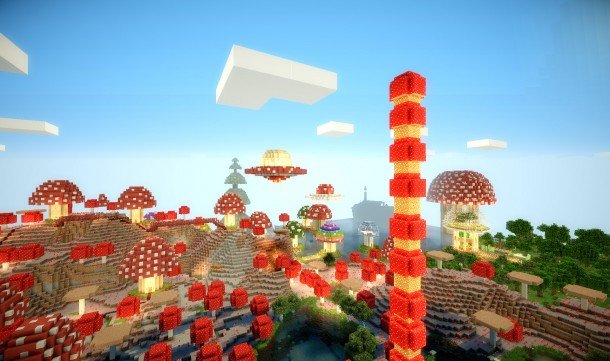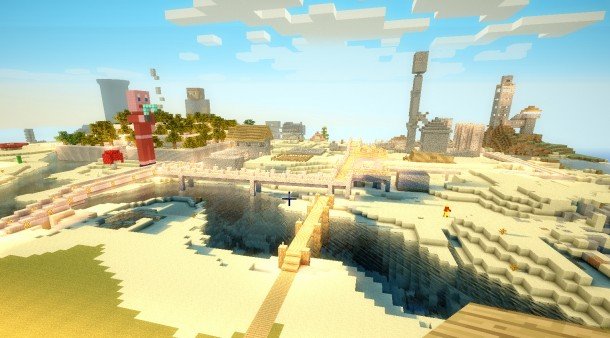Blockbuster - The Making of Minecraft

“I got a Skype call from Bellevue,” says Jakob. “Notch was like 'I met with them, they want to hire me, obviously I'm not interested in this so let's just make it happen. Let's start this business.' I was like, OK, I'll quit my job tomorrow.”
Mojang had already existed in a less formal form – started by Notch in 2009 at the launch of the alpha. But employing people demanded a more legally robust entity.
“We had some extremely stupid ideas about how we were going to make it,” recalls Jakob. “We'd set up this company, and it would borrow money from Notch's company, maybe, and we'd hire people but they'd also consult for Minecraft. It was just idiotic – because we hadn't set up a business before.”
They turned to Carl Manneh, jAlbum's then-CEO, for advice. He advised them to hire him as Mojang's CEO. Notch and Jakob duly took this advice, and the trio went on to co-found the company. Others soon flocked to their banner. Daniel Kaplan joined to help with business development, Jens 'Jeb' Bergensten was hired to develop the backend technology for Scrolls, and prolific pixel artist Markus 'Junkboy' Toivonen came aboard to sculpt the game's visual style.
“When we started we said we're not going to be more than eight people,” says Jakob. “That obviously didn't work out. Minecraft started selling three or four times as many copies per day as it had: we needed more people to handle the support.”
There was also the small problem of unfreezing Notch's money: Paypal had seen fit to limit his account on the grounds of suspicious activity, just as Minecraft sales were spiking, leaving 600,000 Euros stranded.

“Initially we were just putting out fires,” says Notch, “Making sure the server hosting worked, trying to fix the damage from working on a game that large on your own. Some of the good things remain, though. The physics was solid from the start, but that's because I always tried to make sure that jumping from block to block was fun.”
The biggest gaming news, reviews and hardware deals
Keep up to date with the most important stories and the best deals, as picked by the PC Gamer team.
The plan had been to call the game a full release when the multiplayer survival mode had been finalised, but Notch's weekly updates never charted a straight path to that goal.
“I kept thinking of new things!” he says. “I had a list of stuff that I would add after the game was done, but the most interesting features of those kept creeping up the list, so it took a long time to finish the full version.”
Even now that the game can be considered a full release, it continues to evolve. Notch, however, has stepped away from the project, leaving it safely in Jeb's hands.
“I think I'm more interested in doing new development of new games, rather than maintaining a game,” Notch says. “I have this tendency of getting bored or frustrated with things after three to five years. Jeb turned out to be a really good game developer, who was very compatible with how I felt Minecraft should be developed.”
Notch is keen that Jeb has autonomy, and tries not to stick his head into Minecraft's ongoing development too often. Consequently, its additions continually surprise him: the arrival of the three-headed floating Wither Boss, which shoots exploding skulls; the ever-astounding uses of red-stone, a block type that conducts current, enabling the construction of elaborate circuitry; the modding scene's many and varied offshoots, adding nuclear weaponry, teleporters and new biomes.

Jeb, for his part, is resigned to the fact that the addition of bats to the game will always headline above his hard work on the game's underpinning technology.
Meanwhile, Mojang have grown to around 25 people, whose work encompasses the porting of Minecraft to other devices, organising the game's swelling community and using its renown and accessibility for charitable purposes. Mojang donated all of their royalties from a partnership with Lego to charity, while a collaboration with the UN brings the game to communities in the developing world.
Minecraft is many things to many people – and that's always been the strength of this most malleable of games. But who does Notch now think it is for? Is it still for that audience of largely adult, largely male developers and like-minded nerds who buoyed it to early success?
“I think we're still developing for that group,” Notch says. “That's kind of the target audience, because that's who we are. But then younger kids like it as well, which either means we're immature or the kids are more mature than you think.”
And Notch himself – has his fortune changed him? He's practically insouciant compared to the nervous man I interviewed over the phone back in 2009, at the tipping point of Minecraft's early success. He no longer needs to prove himself, perhaps – at least, not to me. But ask him about money and suddenly he's still the same boy from the Stockholm suburbs, the geek done good, coming to terms with what it means to be a wealthy man.
“It's nice not having to worry about being able to pay the rent,” he says, possibly with a mischievous twinkle. “So that's a benefit.”

